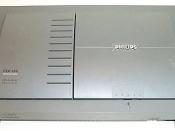Ans.1 Looking back at Philips history, research and development efforts were vital to the Philips success. The importance of research and development is evident in the physics and chemistry lab that developed a tungsten metal filament bulb that was a great commercial success enabling Philips to compete against its giant rivals.
There were three factors which contributed to Philips success in the consumer electronics market during the post war era.
First, the intense focus of the management on Research & Development activities allowed it to introduce high quality products and develop new products which subsequently led to market leadership in those product segments. For example, the radio which Philips developed in 1926 enjoyed a 20% share in the market within a decade. The management of Philips invested heavily in updating the machinery and equipment of the plants along with changes in technology. This was in sync with their efforts to remain a technology focused organization.
Philips was regarded as a leader in industrial research.
Second competency that Philips developed was the internal competition between its commercial and production divisions. Since the establishment, the founding brothers of Philips engaged themselves in a positive battle. The aim of the engineer brother was to produce more than what his salesman brother could sell, and vice versa. This ideology was reflected throughout Philips' manufacturing and sales divisions and created a pseudo incentive for the employees within these divisions. The company also believed in contributing to the welfare of its employees and shared their profits with its employees.
Third was its creation of sales organizations in US, and National Organizations (NO's) within 14 European and other international markets. These markets were characterized by growth opportunities and demanding consumers. Entering these markets provided Philips with economies of scale in terms of production for its expanded product...


